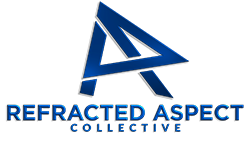
Understanding your Customer Acquisition Cost (CAC) is fundamental to pricing strategy, yet many growing businesses operate without a clear grasp of this metric or how it evolves. This blindness creates operational friction and strategic missteps that quietly erode profitability and growth potential.
- When CAC Blindness Stalls Growth Decisions
- The Root Cause: Embedded Blind Spots in Decision-Making
- Lean Teams: The First Meaningful Shift in CAC Awareness
- Scaling Teams: How CAC Blindness Breaks Workflows
- Scaling Teams: Creating Clarity Amid Complexity
- Preparing for Succession: Preserving CAC Insight Beyond Leadership
- Living with CAC Blindness: The Quiet Operational Signals
- Frequently Asked Questions
- Reframing the CAC Blindness Challenge
- Partner with Refracted Aspect for Clarity and Confidence
When CAC Blindness Stalls Growth Decisions
In a growing business, marketing and sales teams push for increased spend to capture more customers. Yet leadership hesitates, unsure if the rising costs are sustainable or if pricing adjustments are needed. This hesitation isn’t due to lack of ambition but a lack of clarity on CAC trends.
Without a clear view of how much it costs to acquire each customer, teams stall on critical decisions. Budgets remain static, campaigns run without optimization, and pricing remains disconnected from acquisition realities. The tension builds quietly as revenue targets loom.
This operational bottleneck often manifests as repeated requests for data that never fully satisfy decision-makers. The finance team struggles to reconcile marketing spend with sales outcomes, while product teams push for pricing changes that leadership resists. The result is a recurring deadlock that slows momentum.
Operational Tension in Action
Consider a mid-sized B2B software company expanding into new markets. Marketing ramps up digital ads and events, but the CAC creeps upward. Sales cycles lengthen, and the pricing team proposes higher rates to offset costs. Leadership hesitates, lacking confidence in the CAC data’s accuracy or its trend.
Without resolving this, the company risks either eroding margins or losing competitive positioning. The disconnect between acquisition cost and pricing strategy becomes a silent drag on growth.
The Root Cause: Embedded Blind Spots in Decision-Making
The persistence of CAC blindness in capable teams often stems from an embedded decision habit: treating acquisition cost as a static, secondary metric rather than a dynamic driver of pricing and growth strategy.
Teams rely on legacy reporting structures that aggregate marketing spend without linking it directly to customer outcomes. This creates a false sense of control and obscures the real cost drivers. Leadership accepts these reports as sufficient, reinforcing the blind spot.
Day-to-day operations then embed this flawed perspective. Marketing budgets are set annually without iterative review. Pricing decisions are made in isolation from acquisition data. The disconnect becomes normalized, making it invisible to those inside the system.
This is not a failure of capability but a structural flaw in how information flows and decisions are prioritized. The shortcut is to treat CAC as a checkbox metric rather than a strategic lever.
Lean Teams: The First Meaningful Shift in CAC Awareness
For solo founders or small teams, the challenge is to gain clarity on CAC without complex systems or layers of management. The first meaningful shift is to connect acquisition spend directly to customer outcomes in real time, even if imperfectly.
This means tracking every marketing dollar against new customer revenue weekly or monthly, not quarterly. It requires a mindset change: CAC is not a retrospective report but a live input to pricing and budget decisions.
With limited resources, this can be as simple as a shared spreadsheet updated regularly or a basic dashboard that ties marketing campaigns to closed deals. The goal is to create a feedback loop that informs pricing adjustments and spend allocation quickly.
This initial adjustment grounds decision-making in operational reality, enabling lean teams to act with confidence rather than guesswork.
Scaling Teams: How CAC Blindness Breaks Workflows
In businesses scaling faster than they can stabilize, CAC blindness fractures workflows across marketing, sales, and finance. Marketing ramps spend without clear ROI signals, sales struggles with inconsistent pricing guidance, and finance faces unpredictable margins.
This misalignment creates friction: marketing campaigns run on assumptions, sales teams negotiate deals without clear cost thresholds, and finance scrambles to reconcile budgets with actual acquisition costs. The result is inefficiency and lost opportunity.
Two areas where this dysfunction is most evident are campaign optimization and pricing governance. Without accurate CAC data, marketing cannot prioritize channels effectively, and pricing teams cannot set rates that reflect acquisition realities.
These issues ripple downstream, slowing product development prioritization and customer success planning, as revenue forecasts become unreliable. Leadership often misses these connections, seeing symptoms rather than systemic causes.
Scaling Teams: Creating Clarity Amid Complexity
Fixing CAC blindness mid-flight requires actions that reduce drag without halting momentum. Start by clarifying roles and responsibilities around acquisition data. Assign ownership for CAC tracking and ensure marketing, sales, and finance share a single source of truth.
Streamline communication channels to reduce overload and confusion. Replace duct-taped processes with simple, repeatable workflows that integrate CAC insights into pricing and budget decisions.
Leadership must prioritize transparency over perfection. Even imperfect CAC data, shared openly and regularly, enables teams to course-correct faster. This clarity reduces friction and empowers operators to execute with confidence.
The goal is not a perfect system but a functional one that stops the silent drag and aligns teams around shared metrics and decisions.
Preparing for Succession: Preserving CAC Insight Beyond Leadership
When navigating succession, sale, or systemization, long-standing habits around CAC tracking become liabilities. Institutional knowledge about acquisition costs often resides in individuals, not systems, creating risk when leadership changes.
Preserving trust and insight requires making CAC data and decision processes explicit and accessible. This means documenting how acquisition costs are calculated, how they influence pricing, and who owns these decisions.
The initial shift is to externalize what has been tacit. This reduces dependency on key people and builds confidence that the business can maintain pricing discipline and growth strategy through transitions.
Respecting legacy means acknowledging the value of historical knowledge while recognizing that continuity demands clarity and systemization. This balance makes handovers smoother and protects business value.
Living with CAC Blindness: The Quiet Operational Signals
In daily operations, CAC blindness shows up as recurring friction and corner-cutting. Marketing teams complain about delayed budget approvals. Sales teams grumble about inconsistent pricing guidance. Finance flags unexpected margin erosion but lacks actionable insight.
Manual fixes become routine: spreadsheets patched together, last-minute pricing overrides, and “we’ll deal with that later” attitudes toward acquisition cost data. These small signals accumulate, creating a background hum of inefficiency.
Conversations about growth often circle back to “not having the right numbers,” but no one pushes hard enough to fix the root cause. The business runs fast, but the foundation is shaky.
These operational realities are familiar to leaders who have felt the strain of scaling without clear CAC insight. They recognize the quiet drag but often accept it as part of growth rather than a solvable problem.
Frequently Asked Questions
How do I start tracking CAC without fancy tools or extra staff?
Begin by linking your marketing spend directly to new customer revenue in a simple, shared document. Track campaigns and their outcomes weekly or monthly. It doesn’t have to be perfect—consistency and transparency are more important than complexity at this stage.
Why does my team resist sharing CAC data openly?
Often, it’s because the data exposes uncomfortable truths about spend efficiency or pricing. This creates defensiveness. Leadership needs to set the tone that CAC transparency is about learning and improvement, not blame.
How can I align sales and marketing around CAC when they have different priorities?
Establish shared goals tied to acquisition cost and customer value. Make CAC a common metric in performance reviews and planning. Clear ownership and regular cross-team meetings help keep everyone aligned on the same data.
What’s the risk of ignoring CAC trends as we scale?
Ignoring CAC leads to margin erosion, mispriced products, and inefficient spend. Over time, this creates cash flow pressure and limits your ability to invest in growth. The risk compounds quietly until it becomes a crisis.
How do I preserve CAC knowledge when preparing to sell or hand over the business?
Document your CAC calculation methods, decision processes, and data sources. Assign clear ownership and create accessible reports. This reduces reliance on individuals and builds confidence that the business can maintain pricing discipline post-transition.
Reframing the CAC Blindness Challenge
Customer Acquisition Cost blindness is more than a reporting gap—it’s a strategic blind spot that quietly undermines pricing and growth. Left unaddressed, it inflates costs, stalls decisions, and fractures teams, eroding profitability and momentum.
Progress begins with shifting perspective: CAC is a dynamic, operational metric that must inform pricing and budget decisions continuously. This shift reveals hidden drag and unlocks clarity across marketing, sales, and finance.
Recognizing this is not a quick fix but a foundational change in how a business understands and manages growth. It’s one question among many that leaders must confront to build resilient, scalable operations.
Partner with Refracted Aspect for Clarity and Confidence
We work with experienced leaders under real market pressure, navigating real constraints, in environments where missteps cost more than money. That’s why every engagement starts with a grounded conversation.
If that sounds like the conversation you’ve been meaning to have — the one where the point is to talk straight about the business you’re actually running — Book a Discovery Call.
















